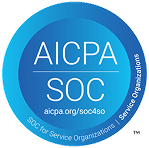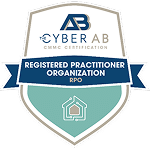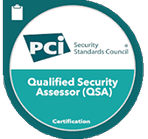The latest proposed updates to HIPAA’s Security Rule seek to strengthen technical safeguards, promote risk management, and enhance accountability for covered entities (health plans, health care clearinghouses, and most health care providers) and their business associates. These changes will benefit smaller healthcare organizations by creating a more equitable environment with improved protection standards for electronic Protected Health Information (ePHI).
The healthcare sector is a prime target for cyberattacks, with ePHI increasingly at risk from state-sponsored threat actors and cybercriminals. These adversaries exploit the sensitive data handled by healthcare systems, leading to identity theft, financial fraud, and disruptions in medical services.
In response, the U.S. Department of Health and Human Services (HHS) proposed updates to the HIPAA Security Rule through a Notice of Proposed Rulemaking (NPRM) on December 27, 2024. This proposal aims to enhance healthcare cybersecurity, modernize protective measures, and align with the National Cybersecurity Strategy, reinforcing the industry’s commitment to patient trust and infrastructure resilience.
Purpose of the New Rule
The proposed updates to the HIPAA Security Rule aim to address complex cybersecurity challenges healthcare organizations face in protecting electronic Protected Health Information (ePHI). The updates focus on three key objectives: stronger technical safeguards, robust risk management, and increased accountability among covered entities and their business associates. These changes shift the healthcare sector from a reactive to a proactive cybersecurity posture, laying the foundation for a more resilient and secure framework.
Overall, the enhancements modernize the HIPAA framework and strengthen the ability to protect ePHI against growing cyber threats.
Benefits for Healthcare SMBs
The proposed updates to the HIPAA Security Rule provide significant advantages for small and medium-sized healthcare organizations (SMBs). These updates are particularly beneficial for SMBs facing resource constraints and lacking specialized cybersecurity expertise.
Below are Some Benefits for SMBs in the Healthcare Sector
Full-Scale Technology Asset Inventory and Network Architecture Map
One of the critical enhancements in the proposed rule is the requirement to develop and maintain a technology asset inventory and network map. This will provide SMBs with an extensive understanding of their IT ecosystems, helping them to identify vulnerabilities in the flow and storage of ePHI.
- Annual Updates: SMBs must update these inventories and maps at least annually or when significant environmental changes occur.
- Proactive Risk Management: This requirement offers SMBs the visibility needed to proactively manage cybersecurity risks, addressing potential vulnerabilities before they become critical.
Enhanced Data Protection Standards
The Notice of Proposed Rulemaking (NPRM) introduces more robust data protection standards, including the mandatory implementation of multi-factor authentication (MFA) and encryption of ePHI.
- MFA: This requirement helps protect against weak access controls, one of the most common vulnerabilities in healthcare breaches.
- Encryption: SMBs will be required to encrypt ePHI at rest and in transit, significantly reducing the risk of data compromise during cyber incidents.
- Leveling the Playing Field: With these industry-standard controls in place, SMBs are better equipped to defend against cyber threats, even without the resources of larger organizations.
Proactive Risk Management and Analysis
The updated rule emphasizes proactive risk management through more detailed risk analysis requirements.
- Robust Assessments: SMBs must conduct in-depth assessments, including reviewing their technology asset inventories, mapping potential vulnerabilities, and evaluating risks related to ePHI.
- Fostering a Preparedness Culture: While this might seem daunting, these requirements foster a culture of preparedness, ensuring that smaller healthcare entities can prioritize and address cybersecurity risks effectively.
72-Hour Recovery Mandate for Critical Systems
The NPRM introduces a 72-hour recovery mandate for critical systems, ensuring SMBs have contingency plans to minimize operational downtime.
- Minimizing Disruptions: This provision is especially beneficial for smaller healthcare providers who cannot afford prolonged disruptions in patient care.
- Enhanced Incident Response: SMBs must also establish incident response procedures, including documented plans and rapid reporting protocols, to address cybersecurity incidents swiftly and effectively.
Business Associate and Subcontractor Compliance
The NPRM includes provisions for business associates and subcontractors, requiring them to verify compliance with technical safeguards at least annually.
- Supply Chain Security: This is particularly advantageous for SMBs that rely on third-party vendors for IT and cybersecurity services.
- Shared Responsibility: By holding business associates accountable for meeting security requirements, the rule ensures that SMBs can maintain a secure supply chain without shouldering the entire compliance burden.
Additional Changes from the NPRM
Transition from “Addressable” to “Required” Specifications
The proposed rule removes the flexibility of “addressable” implementation specifications, making all security measures uniformly required. This shift eliminates ambiguities and consistently applies robust security practices across all regulated entities.
Reducing Attack Surfaces
Regulated entities must deploy anti-malware solutions, remove extraneous software, and turn off unused network ports as identified during risk analysis. These measures aim to minimize attack surfaces and enhance system integrity.
Incident Management and Reporting
Organizations must document incident response plans, specifying how staff should report and address security incidents. Reporting deadlines for contingency plan activations and security incidents are now strictly defined, improving transparency and coordination during emergencies.
Potential Challenges and Solutions
Small and Medium-Sized Entities
Small and medium-sized healthcare organizations often struggle to meet the new HIPAA Security Rule due to limited resources, making compliance with complex cybersecurity standards challenging. Implementing safeguards like encrypting ePHI and multi-factor authentication can be burdensome. However, aligning with Managed Security Service Providers (MSSPs) can help these organizations.
MSSPs offer cost-effective solutions and expertise in vulnerability management, encryption, and penetration testing, allowing smaller healthcare entities to focus on their core functions while ensuring the security of sensitive patient data
Adaptation Period
Transitioning to the updated requirements of the HIPAA Security Rule will undoubtedly require significant time and resources. Healthcare organizations must substantially align their existing systems, policies, and processes with the new rules.
The adaptation period will likely span several months, and a large number of organizations will need assistance from third-party security compliance experts to streamline the implementation process. Moreover, healthcare providers must ensure that these efforts do not interfere with daily operations, striking a delicate balance between regulatory compliance and business continuity.
Interoperability and Collaboration
One of the most complex challenges the new HIPAA requirements pose is achieving interoperability and ensuring effective collaboration between covered entities, business associates, and subcontractors. As the reliance on third-party vendors and cloud-based services continues to grow, safeguarding ePHI across various touchpoints has become even more critical.
In Closing
The NPRM introduces stringent requirements that compel business associates to verify their cybersecurity measures and provide written certification of compliance with technical safeguards. This added responsibility emphasizes healthcare providers, highlighting the need for increased diligence and proactive cybersecurity management.
To successfully navigate these complexities, organizations must first establish transparent and efficient communication channels with all parties involved. Standardizing security protocols and implementing extensive data-sharing agreements are essential steps. These agreements should meticulously outline each entity’s specific responsibilities in safeguarding ePHI, ensuring all stakeholders are aligned in their approach to data security, mitigating potential vulnerabilities, and bolstering overall cybersecurity defenses.








